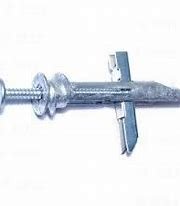Plasterboard screws, also known as drywall screws, are essential fasteners used in construction and renovation projects. They are specifically designed to secure plasterboard sheets to wooden or metal framing. With their unique features and applications, plasterboard screws have become a staple in the building industry.
Understanding Plasterboard Screws
Plasterboard screws are typically made of hardened steel, providing excellent strength and durability. They have a partially threaded shank, allowing for easy penetration into the plasterboard while ensuring a secure grip on the framing material. The head of a plasterboard screw is typically Phillips or slotted, making it compatible with standard screwdrivers.
Types of Plasterboard Screws
There are several types of plasterboard screws available, each suited for different applications:
Standard Plasterboard Screws: These are the most common type, used for general-purpose drywall applications. They have a partially threaded shank and a Phillips or slotted head.
Self-Drilling Plasterboard Screws: These screws have a sharp, serrated tip that allows them to drill into the framing material without pre-drilling. They are ideal for applications where speed and efficiency are important.
Drywall Screws with Washer Heads: These screws have a washer-shaped head that provides a wider surface area for better distribution of load. They are often used in areas where the drywall is subjected to heavy loads, such as around door and window openings.
Stainless Steel Plasterboard Screws: These screws are made of stainless steel, making them resistant to corrosion and ideal for outdoor applications or areas with high humidity.
Choosing the Right Plasterboard Screws
When selecting plasterboard screws, it is essential to consider the following factors:
Framing Material: The type of framing material (wood or metal) will determine the appropriate screw length and thread pitch.
Plasterboard Thickness: The thickness of the plasterboard sheets will also influence the screw length.
Load Requirements: The anticipated load on the drywall will determine the screw type and size.
Environmental Factors: If the drywall will be exposed to moisture or outdoor conditions, stainless steel screws may be necessary.
Proper Installation of Plasterboard Screws
Correct installation of screws is crucial for ensuring a secure and durable finish. Here are some essential tips:
Pre-Drilling: For standard plasterboard screws, pre-drilling a pilot hole is recommended to prevent the screw from splitting the drywall.
Screw Length: The screw should be long enough to penetrate the framing material by at least 1 inch.
Driving Torque: Use a cordless drill with a low-speed setting to avoid stripping the screw head.
Countersinking: For a flush finish, countersink the screw head slightly below the surface of the drywall.
Common Plasterboard Screw Problems and Solutions
Stripped Screw Heads: If a screw head becomes stripped, use a larger Phillips or slotted bit to grip the screw.
Loose Screws: If a screw becomes loose, tighten it with a screwdriver. If the problem persists, replace the screw.
Cracked Drywall: If the drywall cracks around a screw, it may be due to improper installation or excessive load. Repair the crack and replace the screw.
Plasterboard Screw Alternatives
While screws are the most common choice for securing drywall, there are some alternative options:
Nails: Nails can be used to attach drywall to framing, but they are not as secure as screws and can damage the drywall.
Construction Adhesive: Construction adhesive can be used to bond drywall to framing, but it may not be as strong as screws, especially in areas with high loads.
Plasterboard Screws and Sustainability
The building sector has placed an increasing amount of attention on sustainability in recent years. Plasterboard screws, while essential for building projects, have traditionally been made from steel, a material with a significant carbon footprint. However, there are now sustainable alternatives available.
Recycled Steel Plasterboard Screws
One option is to use steel screws made from recycled steel. Recycled steel is produced by melting down scrap metal, which reduces the energy consumption and greenhouse gas emissions associated with steel production. By choosing recycled steel screws, you can contribute to a more sustainable building project.
Stainless Steel Screws for Longevity
Stainless steel screws offer another sustainable option. While stainless steel is a more expensive material than traditional steel, its corrosion resistance can extend the lifespan of the building. This can reduce the need for future repairs and replacements, ultimately leading to a more sustainable construction project.
Alternatives to Steel Screws
In addition to steel screws, there are also alternative materials being explored for use in drywall applications. These include:
Biodegradable Screws: Made from renewable materials like bamboo or hemp, biodegradable screws offer a sustainable solution that can decompose over time.
Recycled Plastic Screws: These screws are made from recycled plastic, providing a way to reduce plastic waste.
FAQs
What is the difference between standard and self-drilling plasterboard screws?
Standard plasterboard screws require pre-drilling a pilot hole before installation, while self-drilling screws have a serrated tip that allows them to drill into the framing material without pre-drilling.
What is the best type of plasterboard screw for outdoor use?
Stainless steel plasterboard screws are ideal for outdoor use as they are resistant to corrosion.
How can I prevent stripped screw heads when installing plasterboard screws?
Use a cordless drill with a low-speed setting and avoid excessive force when driving the screws.
What should I do if a plasterboard screw becomes loose?
Tighten the loose screw with a screwdriver. If the problem persists, replace the screw.
Are there sustainable alternatives to steel plasterboard screws?
Yes, there are sustainable options such as recycled steel screws, stainless steel screws, and biodegradable or recycled plastic screws.
How can I minimize waste during drywall installation?
Carefully plan and cut drywall sheets to avoid excessive waste. Consider using pre-cut drywall panels if available.
Conclusion
Plasterboard screws are essential fasteners used in construction and renovation projects. By understanding the different types of screws, their proper installation techniques, and potential problems, you can ensure a secure and durable drywall finish. With the right choice of screws and proper installation, you can create a strong and reliable foundation for your walls.
To read more, click here.

Leave a Reply